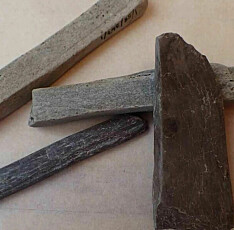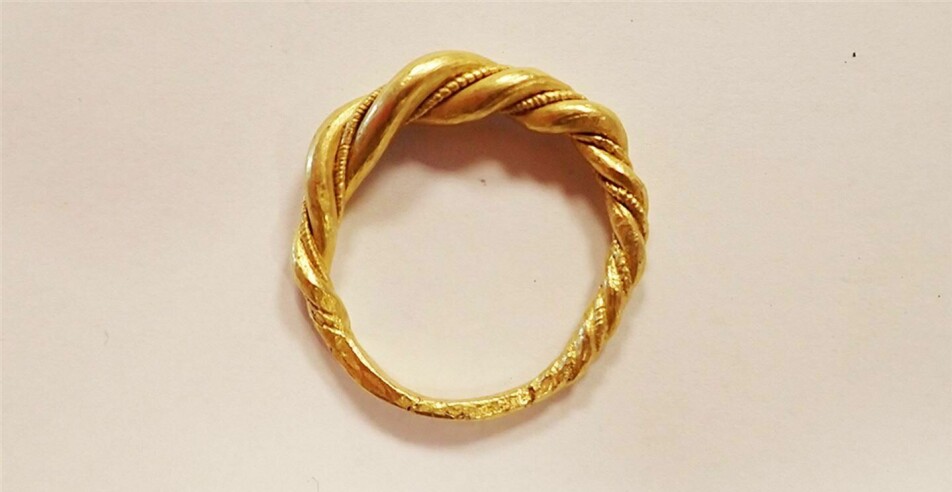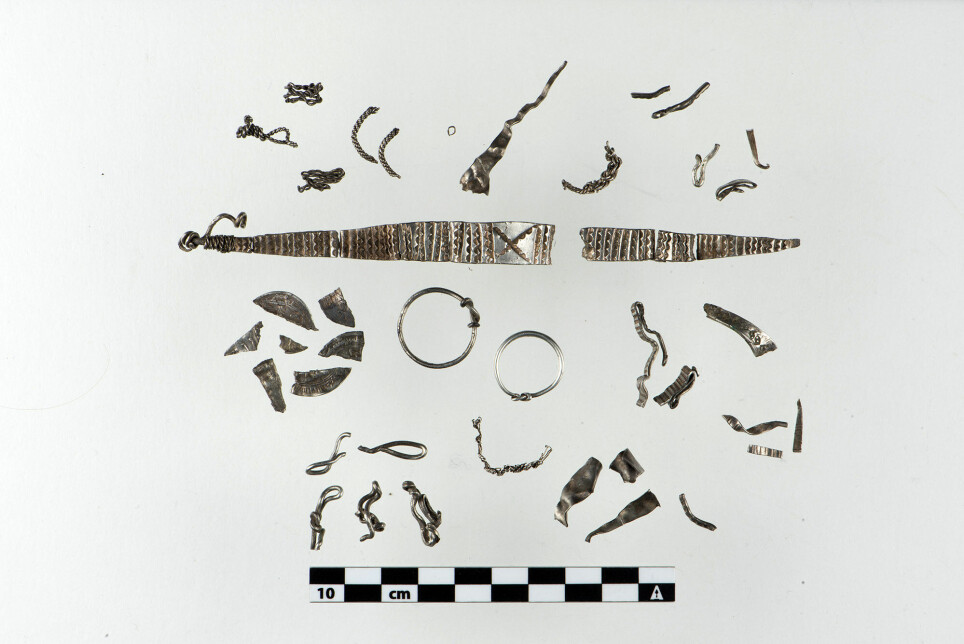
One Viking’s lost silver treasure discovered by metal detector enthusiast
46 pieces of silver from the Viking age were recently discovered in a field in mid-Norway. “It’s an exceptional find,” says archaeologist.
“It’s been many years since such a large Viking treasure was found in Norway,” archaeologist Birgit Maixner, from NTNU Vitenskapsmuseet, says in a press release from NTNU.
Save for two intact finger rings, the silver treasure consists of fragments. Arab coins, a braided neck ring, arm rings and necklaces – all of them cut in pieces.
“This find is from a time when pieces of silver would be weighed and used for payment,” Maixner says.
This economic system was used in the transition between bartering with goods to the money economy, the archaeologist explains.
While coins were in use on the Continent from around 550, people in the Nordic region mainly bartered, until the end of the 800s when the weight economy was established.
Most of the pieces weigh less than one gram, which suggests that they have been used repeatedly for payment.
Around 1.100 years ago then, a Viking lost or buried this ‘money’ here, in Stjørdal in Trøndelag county, mid-Norway.
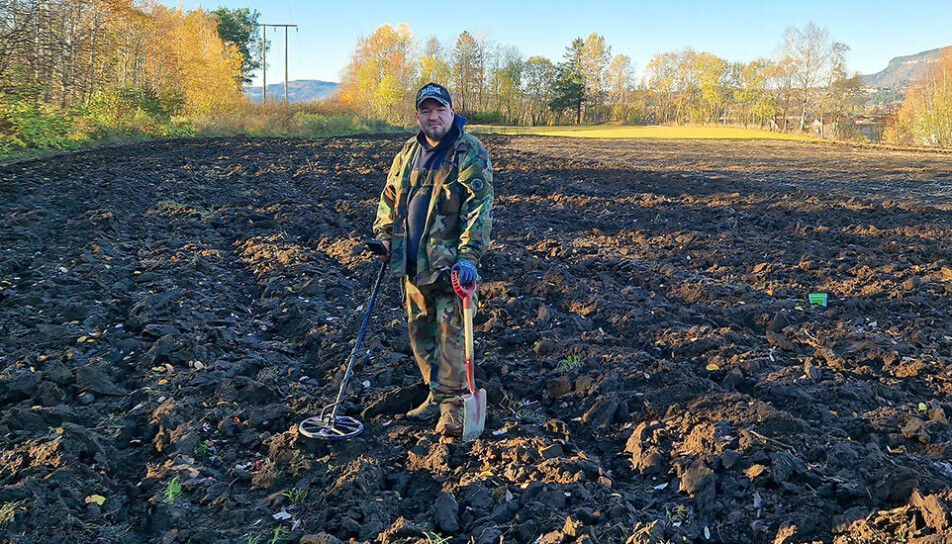
A fine day for a Viking find
And here the treasure lay, until one day in December 2021, when the weather was finally nice, and Pawel Bednarski decided to bring his metal detector out to do a bit of searching around a field.
“The first thing I found was a small ring,” Bednarski says in the press release.
He didn’t think much of the ring. But then he found another one, and a piece of an armring, and so on. Finally he had dug out a pile of silver, hidden beneath no more than 2-7 centimetres of soil.
“It wasn’t until I got home and rinsed the pieces under water that I understood that this was an exciting find,” says Bednarski.
He handed the find over to the municipal archaeologists, who confirmed that this was very interesting indeed, and most likely from the Viking Age.
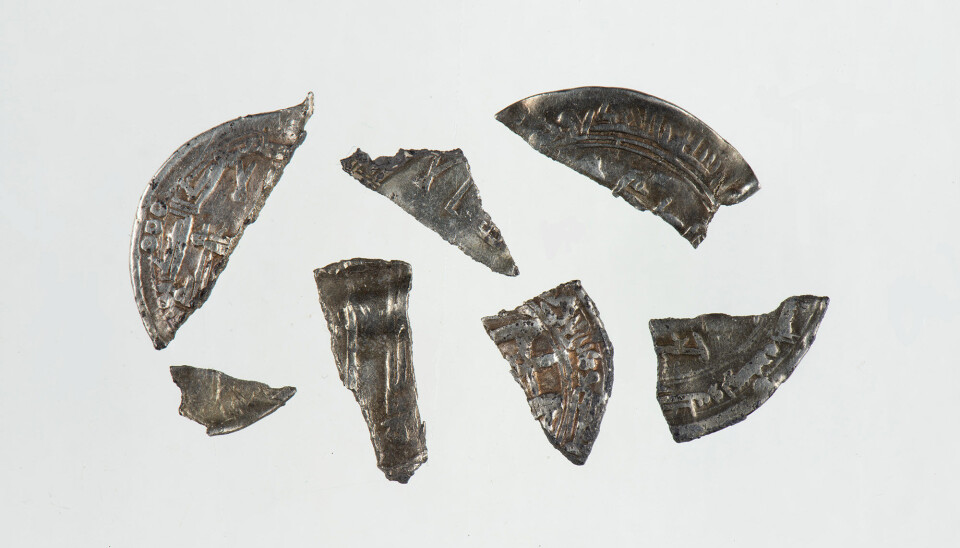
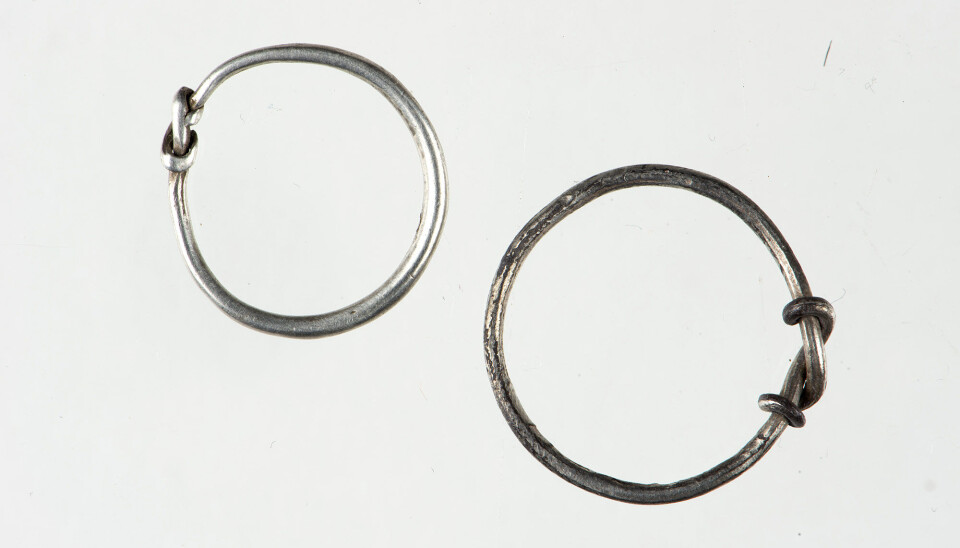
Carefully cut into pieces
The find includes an almost intact bracelet – cut into eight pieces. Archaeologists believe these types of bracelets were developed in Denmark in the 800s.
The Arabic coins are older than what is usual in a Viking find, four of them have been dated to the end of the 700s and into the 800s.
These features are more common for treasure finds from Denmark than Norway, archaeologist Maixner explains. Based on this she believes the treasure is from around 900 AD.
It’s more common to find fragments of several different items in these sorts of Viking treasures. In this case, however, the find contains several pieces of the same item – such as the carefully cut bracelet.
“We can imagine that the owner had prepared to trade by cutting the silver into appropriately weighted pieces,” Maixner says.
“The fact that this person had access to an entire broadbanded bracelet, which was primarily a Danish item, might suggest that the owner had been to Denmark before travelling to this area in mid-Norway,” Maixner says.
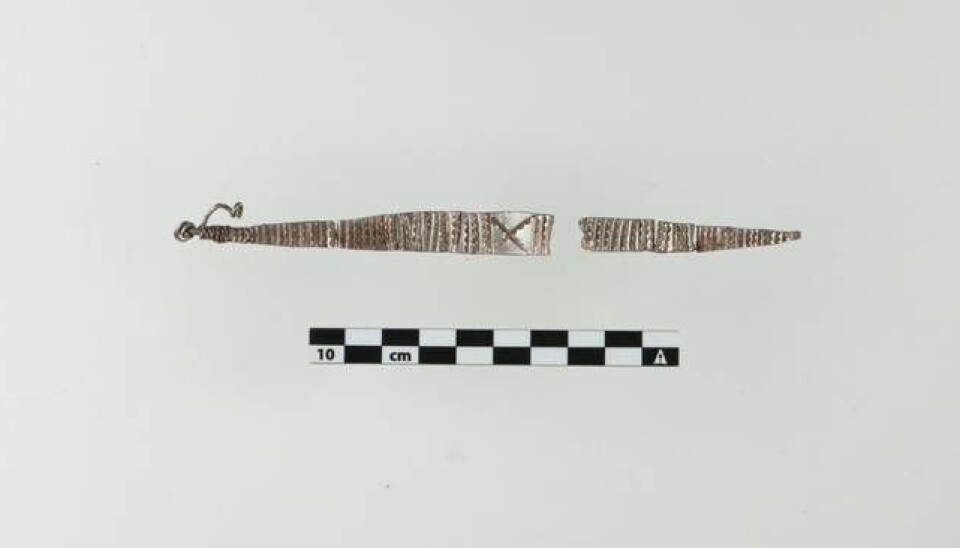
Just over half a cow
Previous finds in the same area, such as equipment used to weigh silver, suggest that trading was taking place here.
And using pieces of silver to pay clearly had its advantages. If you wanted to barter for a cow, you needed to have for instance a number of sheep to make the deal. Carefully weighted pieces of silver was much easier to handle and travel with, and allowed the owner to buy goods whenever it suited.
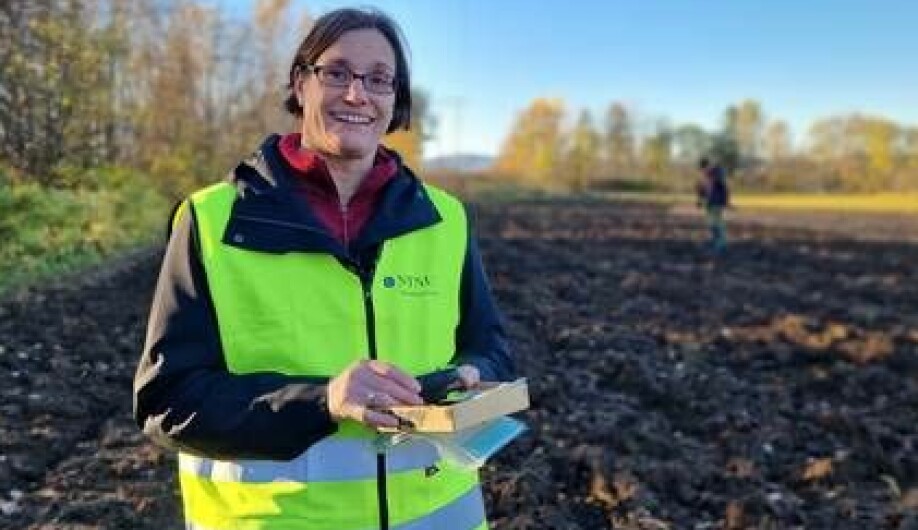
So what could this Viking have bought with these 46 silver pieces – that weigh 42 grams in total?
Based on information from Gulatingsloven, the Gulating Law, about the price of cows, Maixner calculates that the money would fetch around 0,6 cows.
The value of the treasure was considerable, particularly for an individual, Maixner says, noting that a medium sized farm might have around five cows.
We can only speculate on why the treasure was hidden, not to be found for more than 1.000 years.
Such deposits are sometimes interpreted as offerings to the Gods. Or perhaps a Viking arriving from Denmark hid his treasure to keep it safe, and was somehow prevented from returning to fetch it.
------








